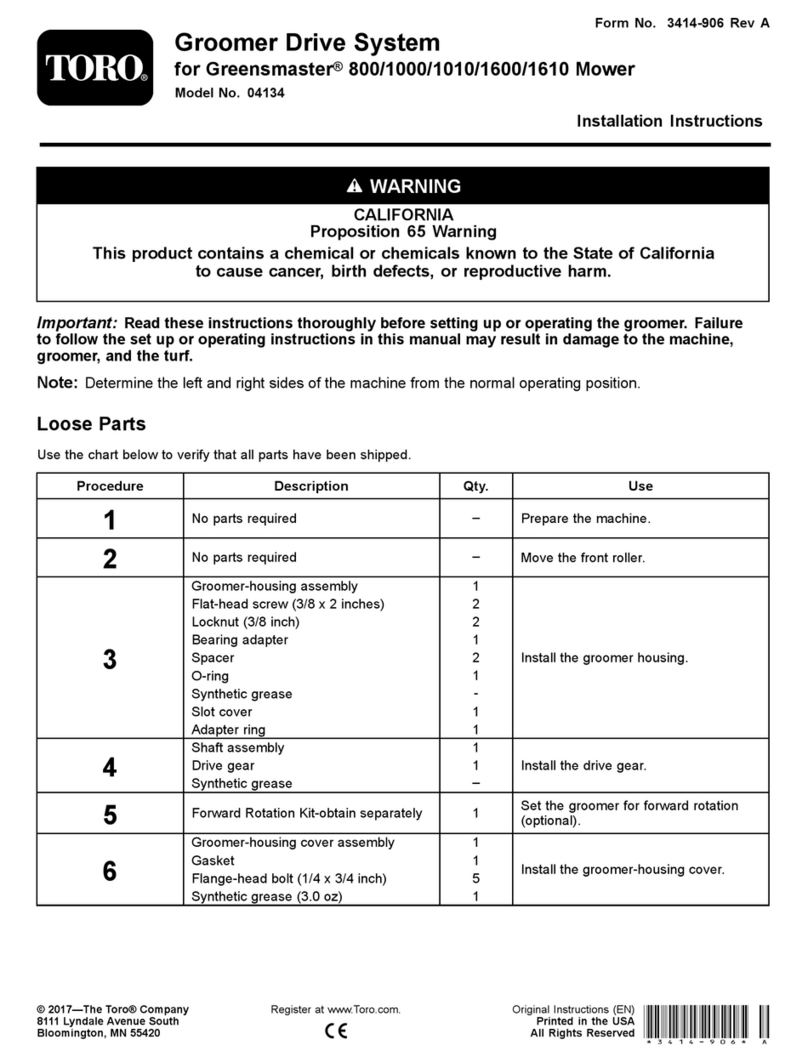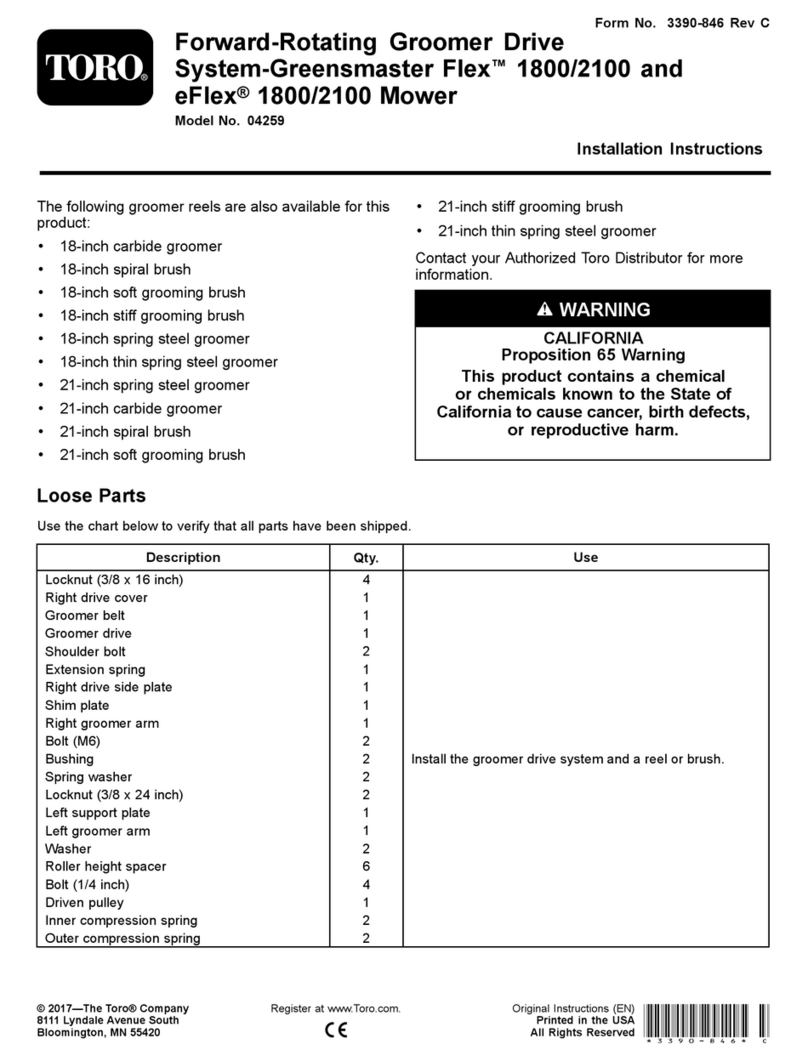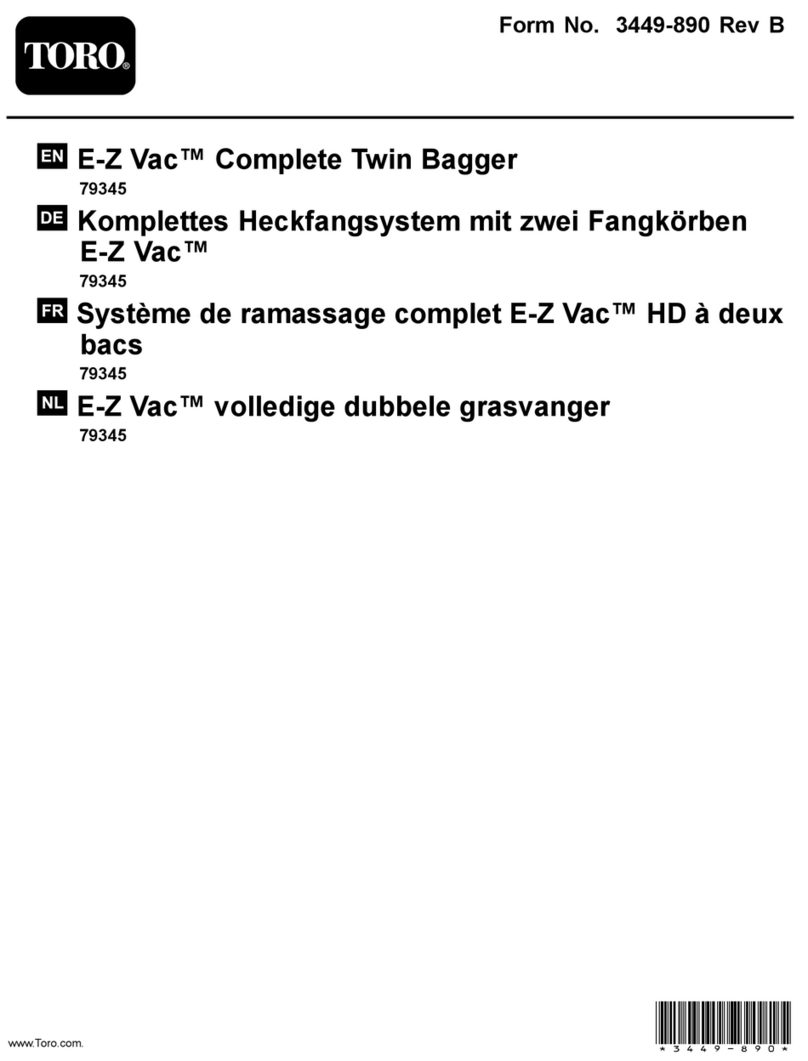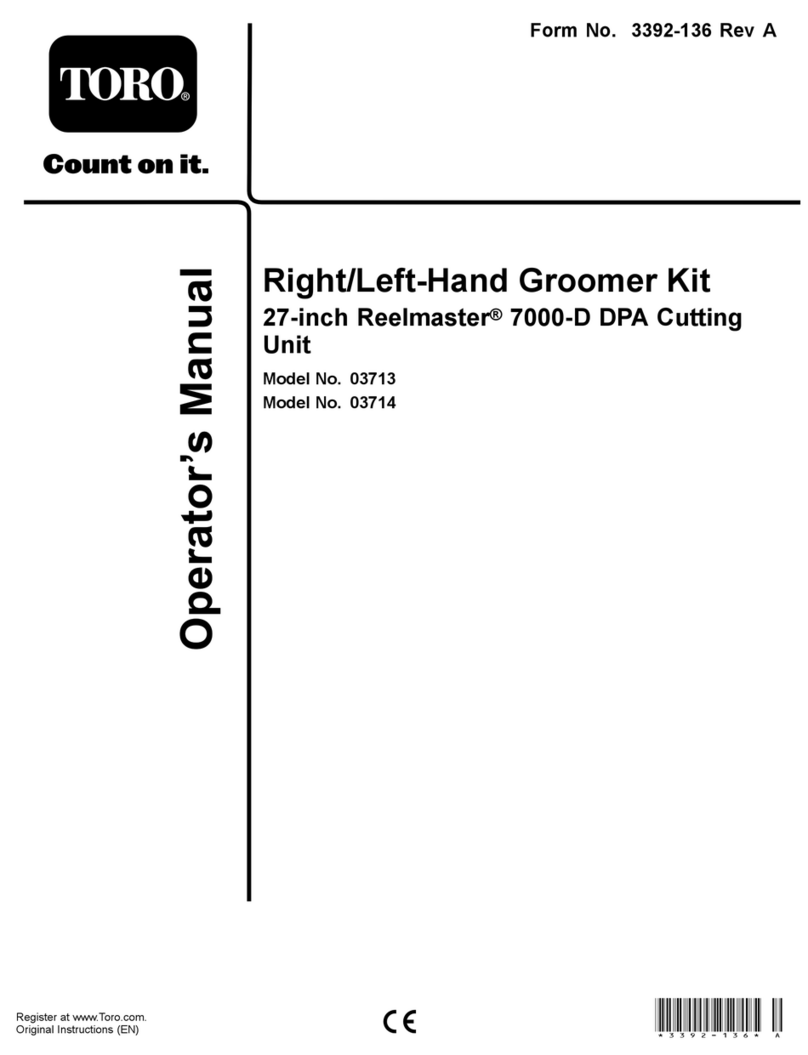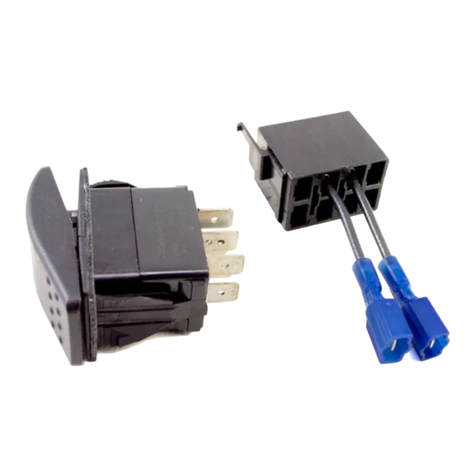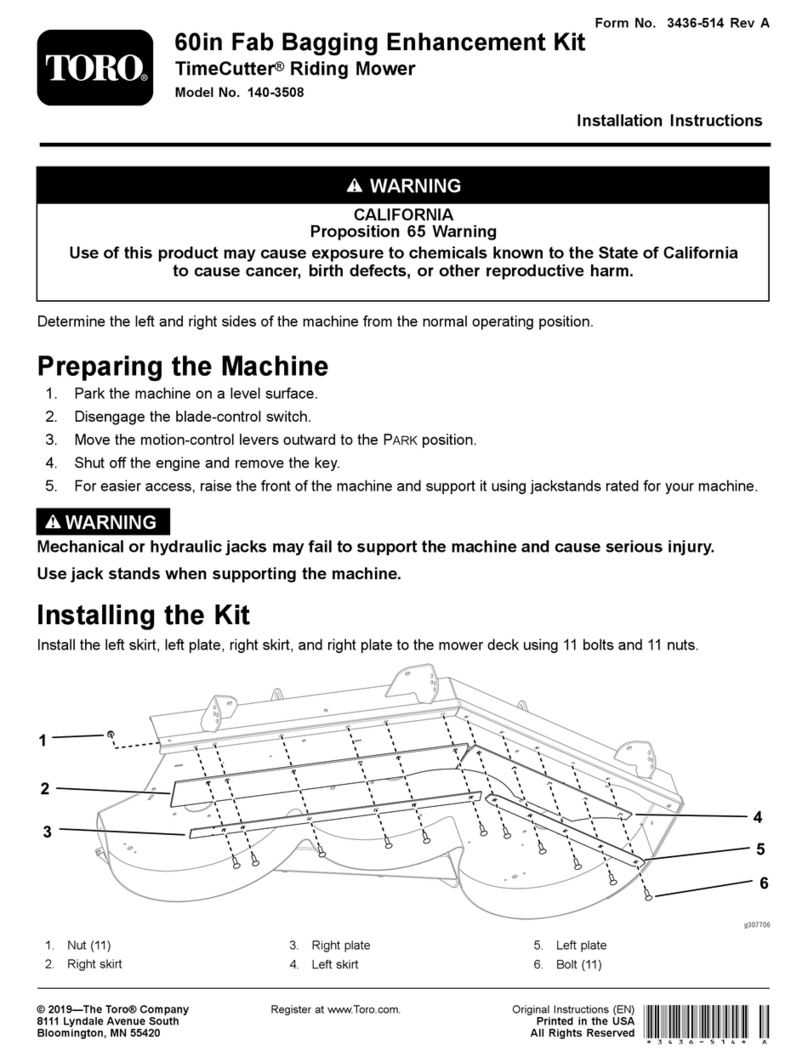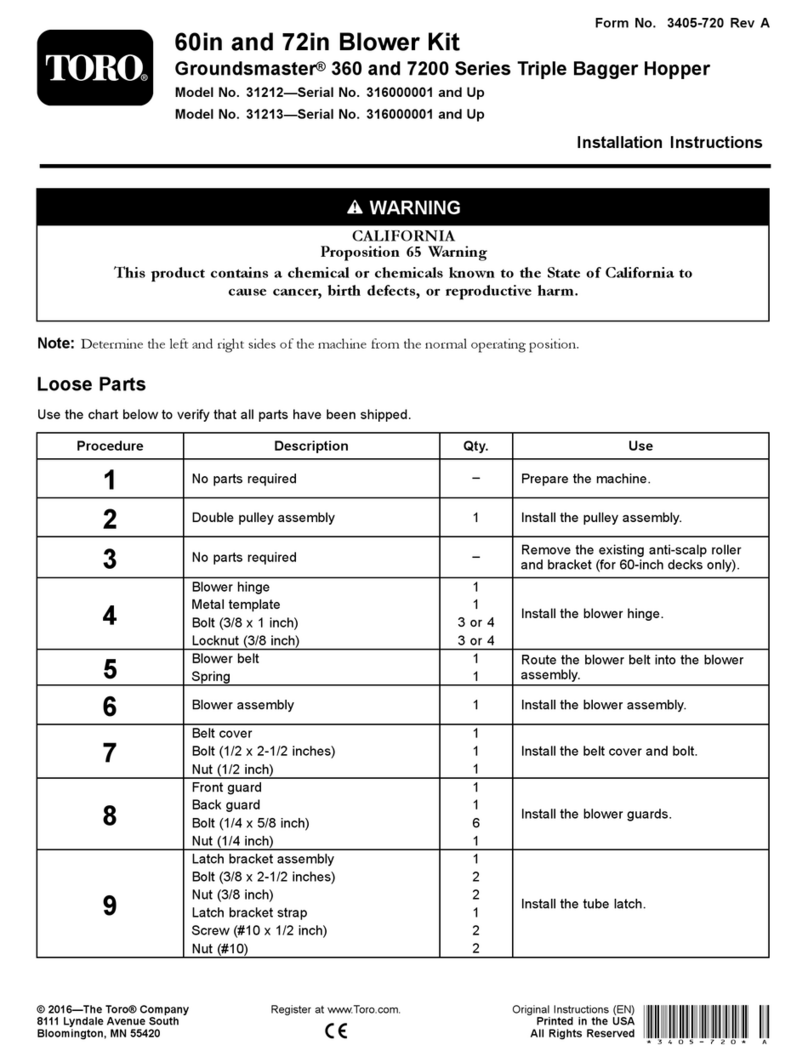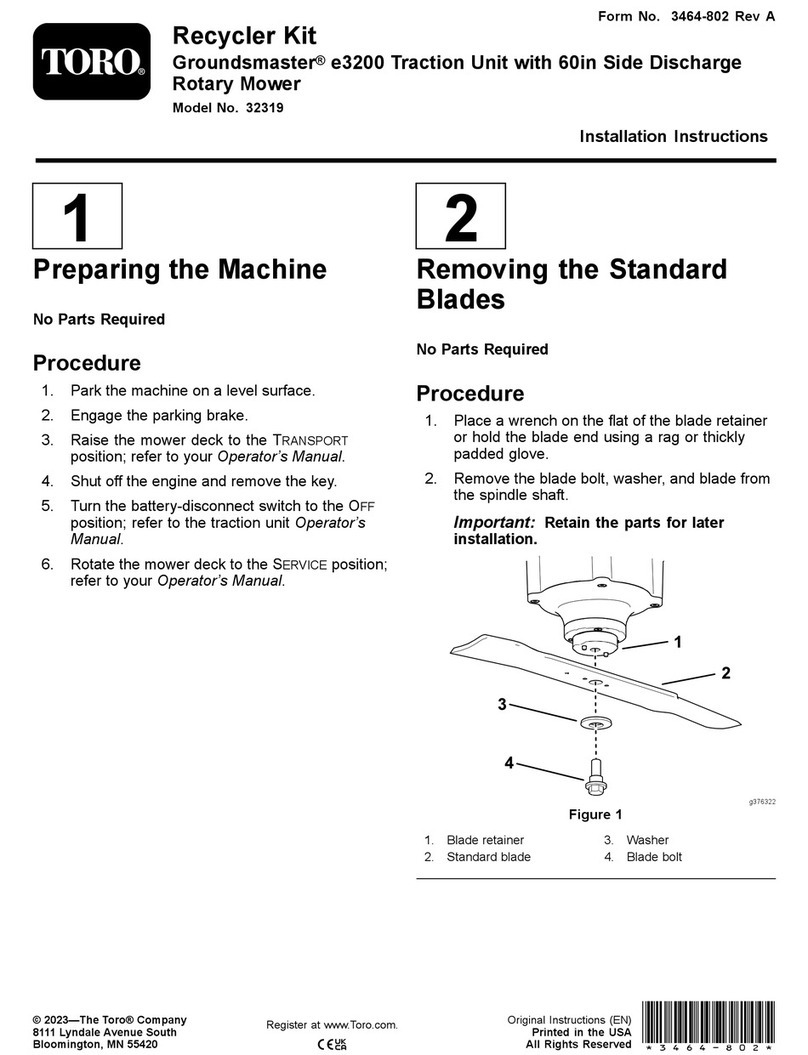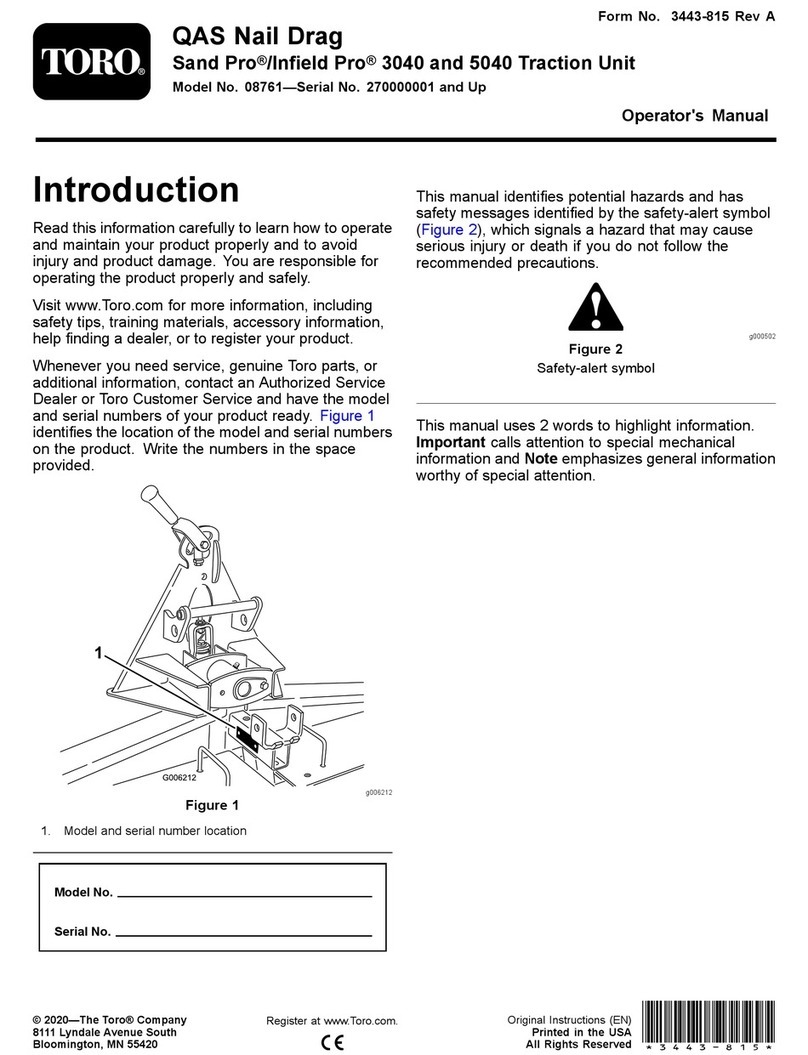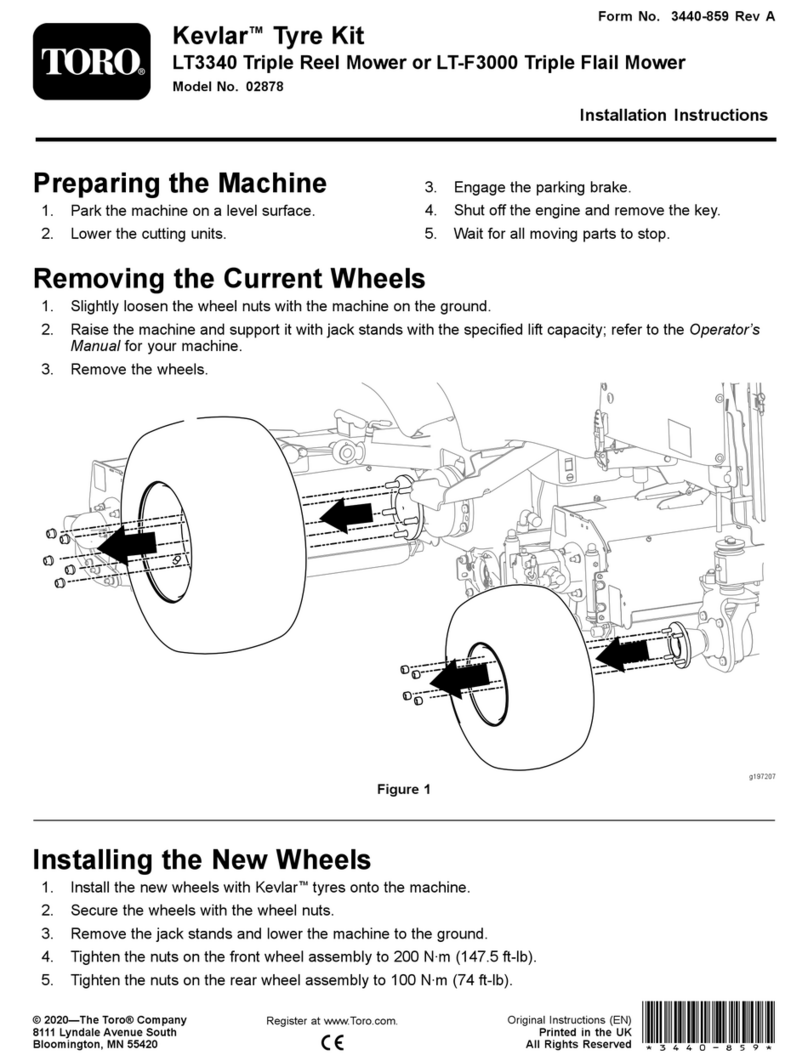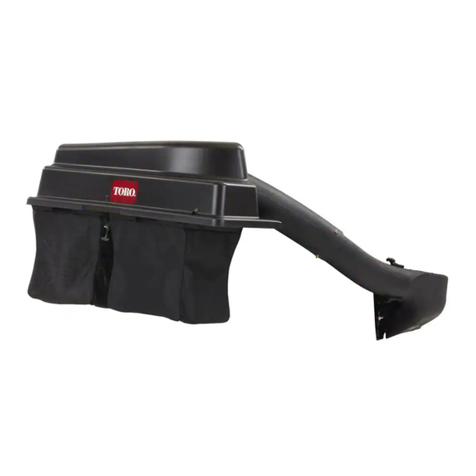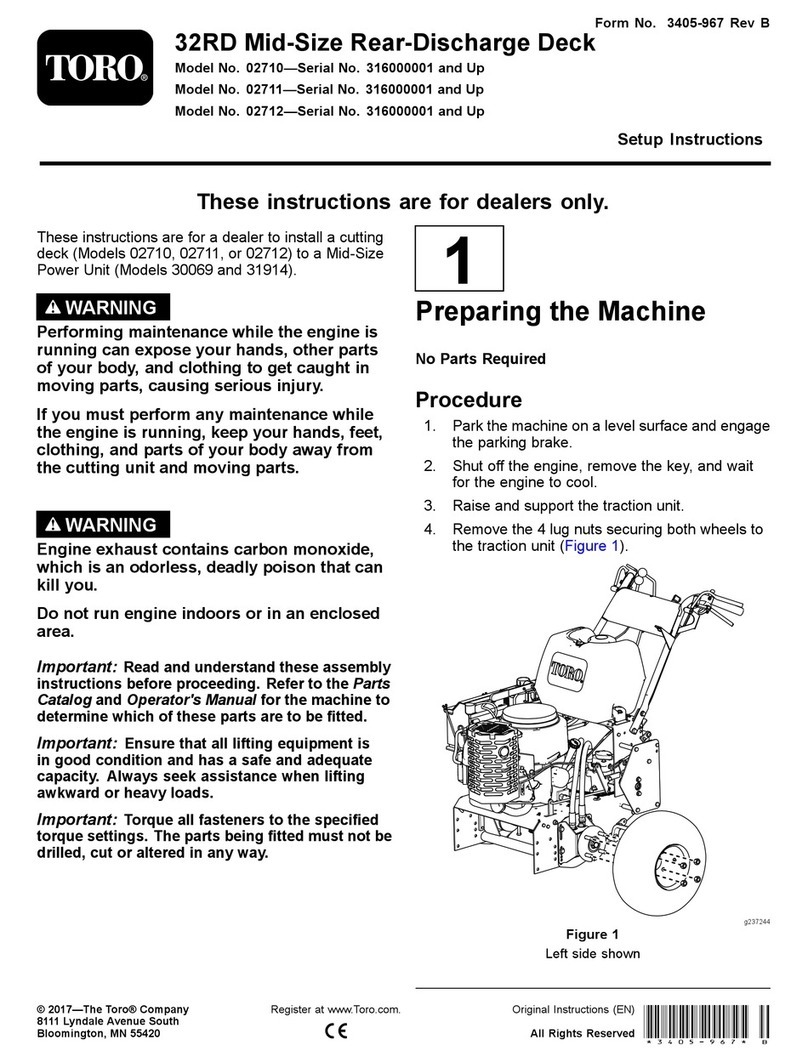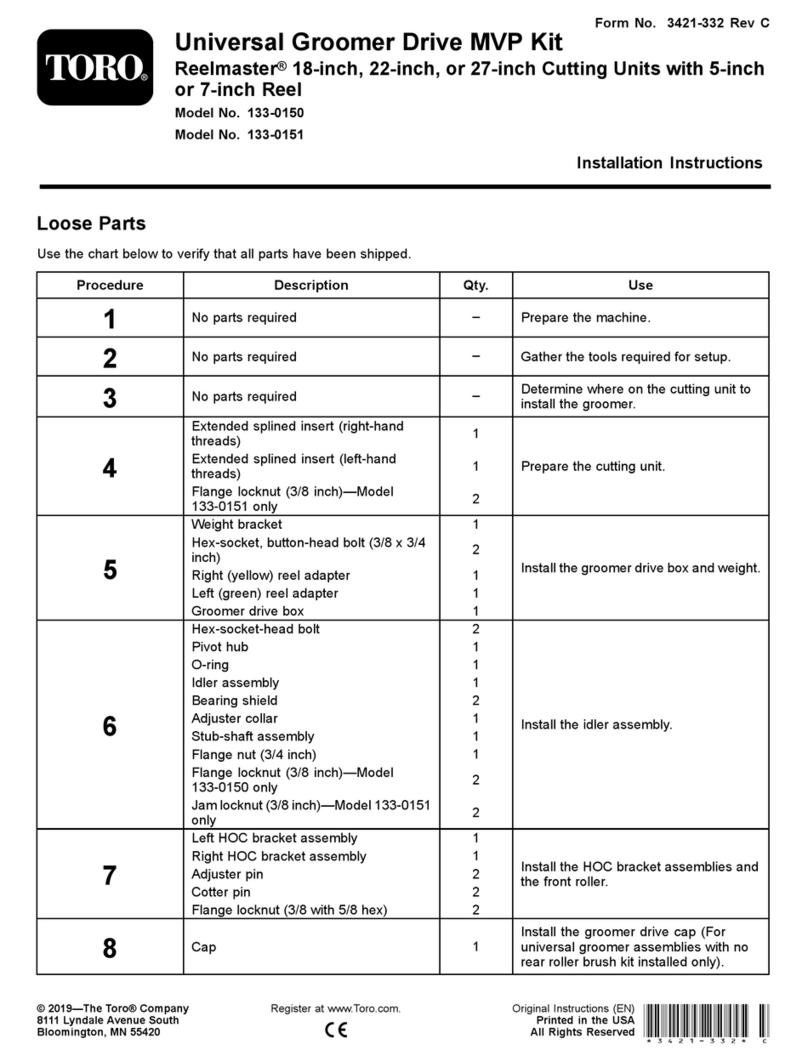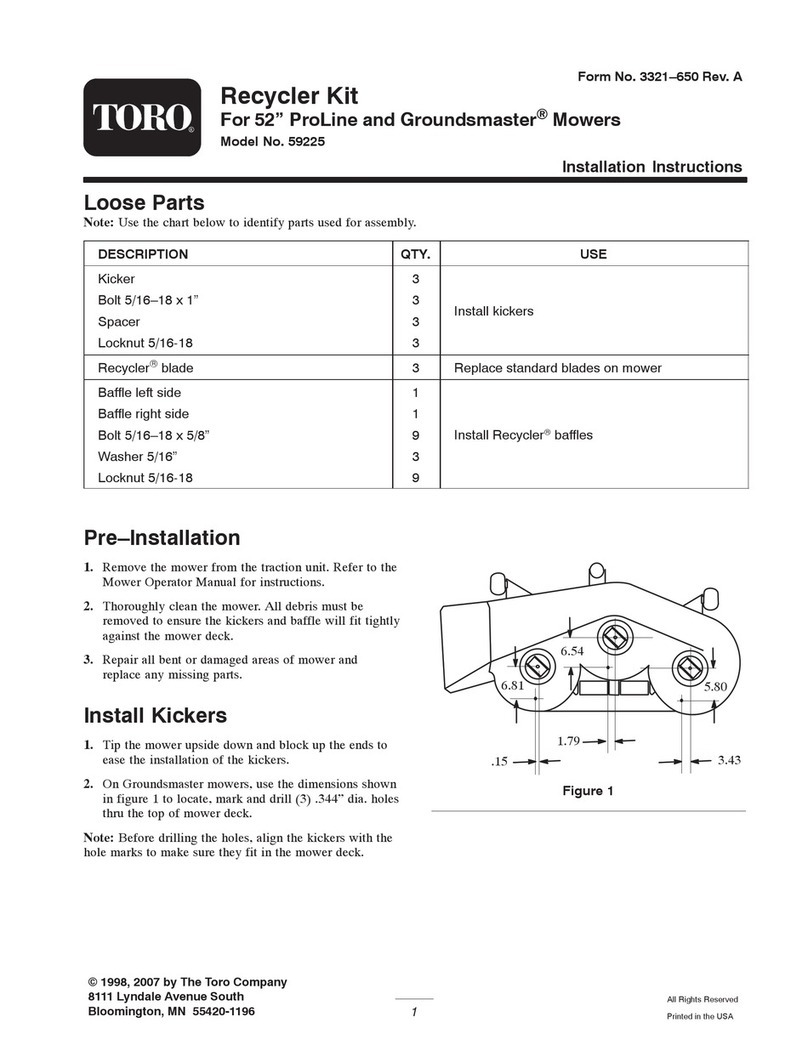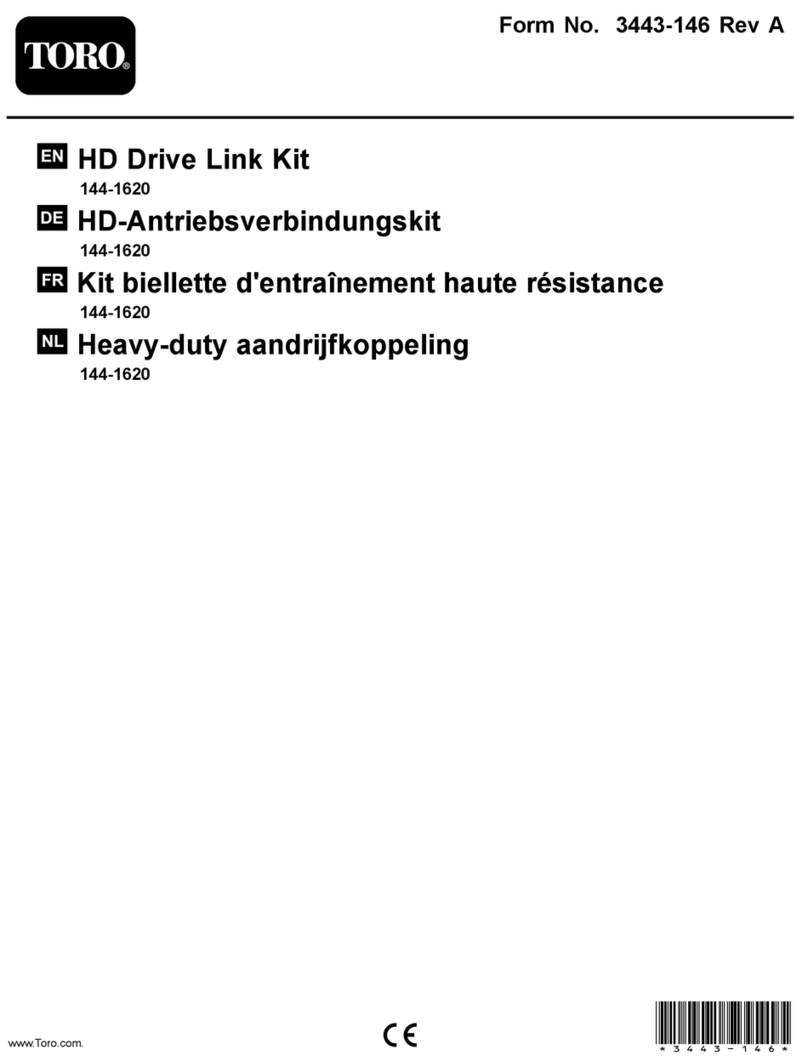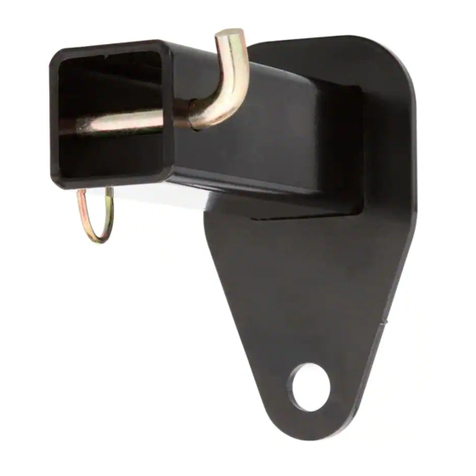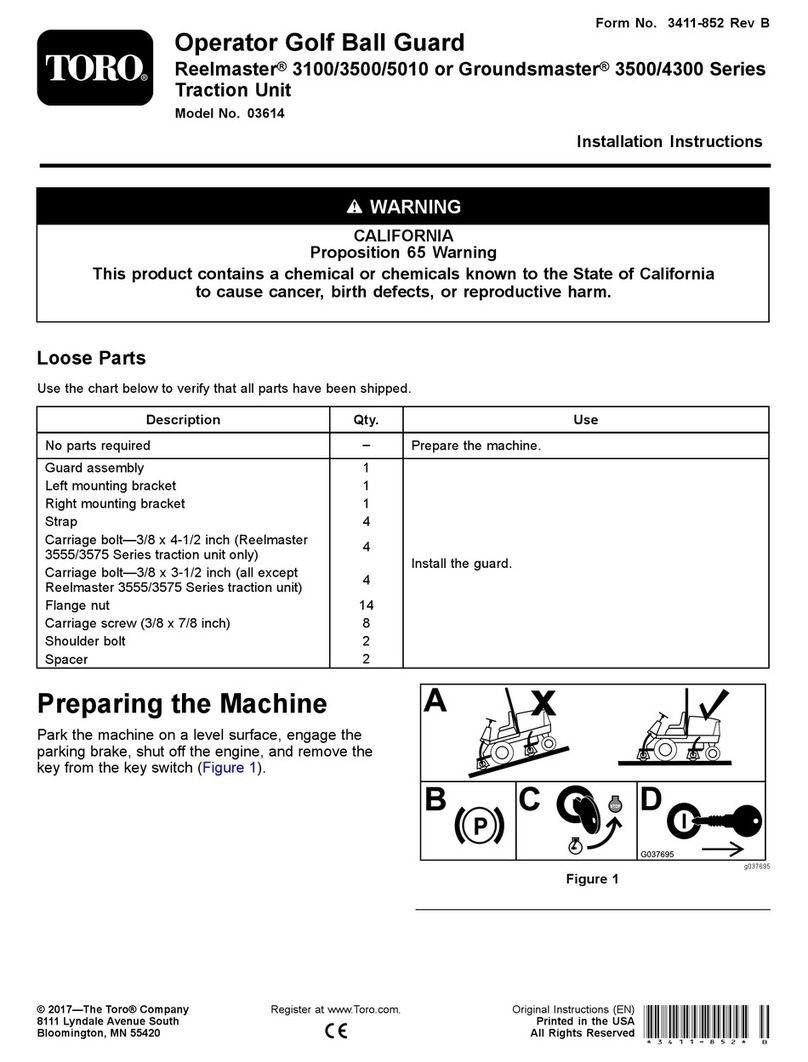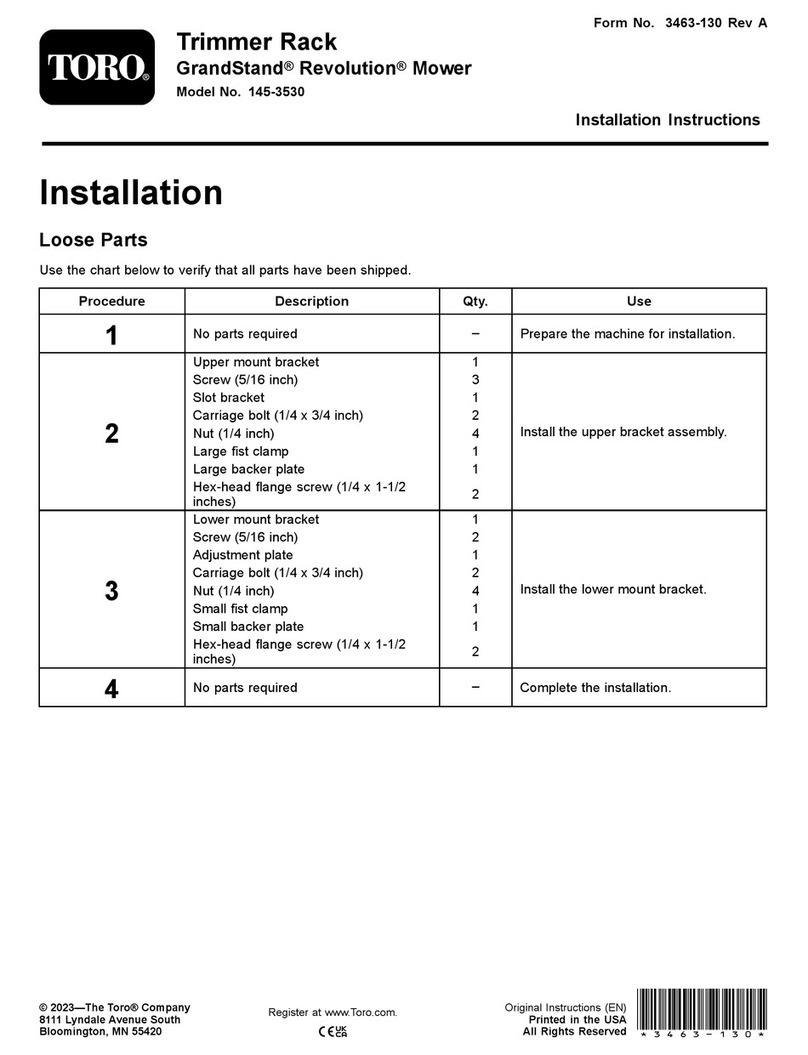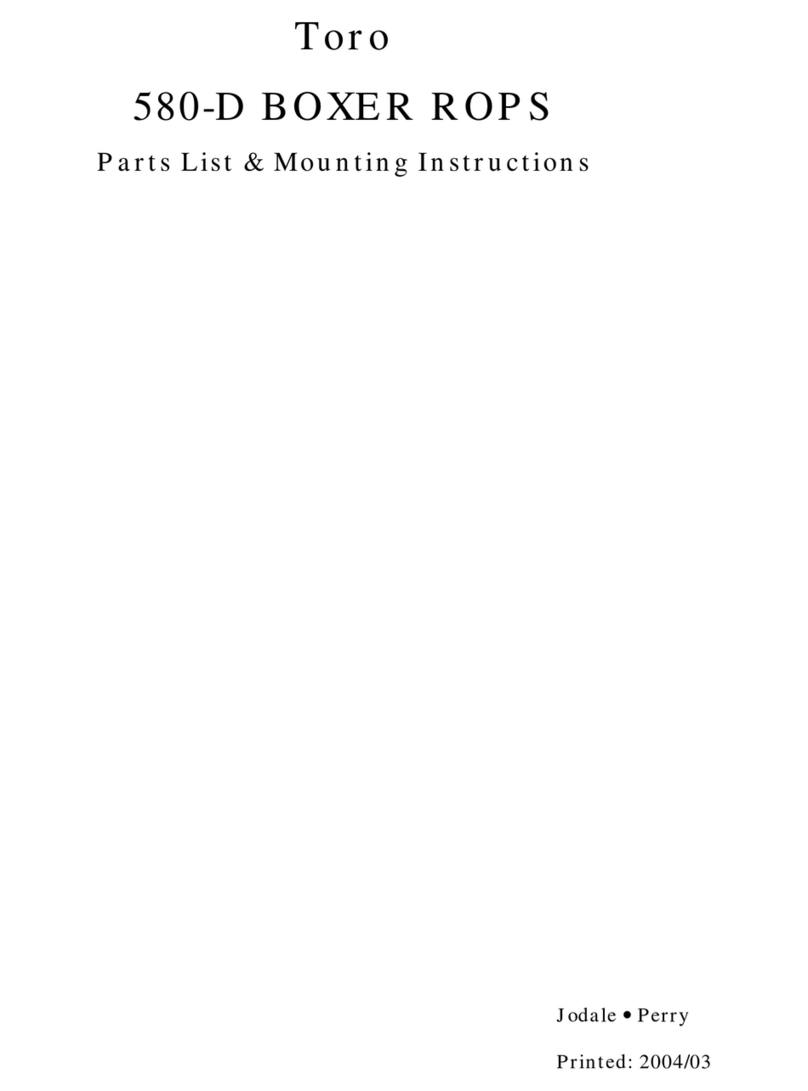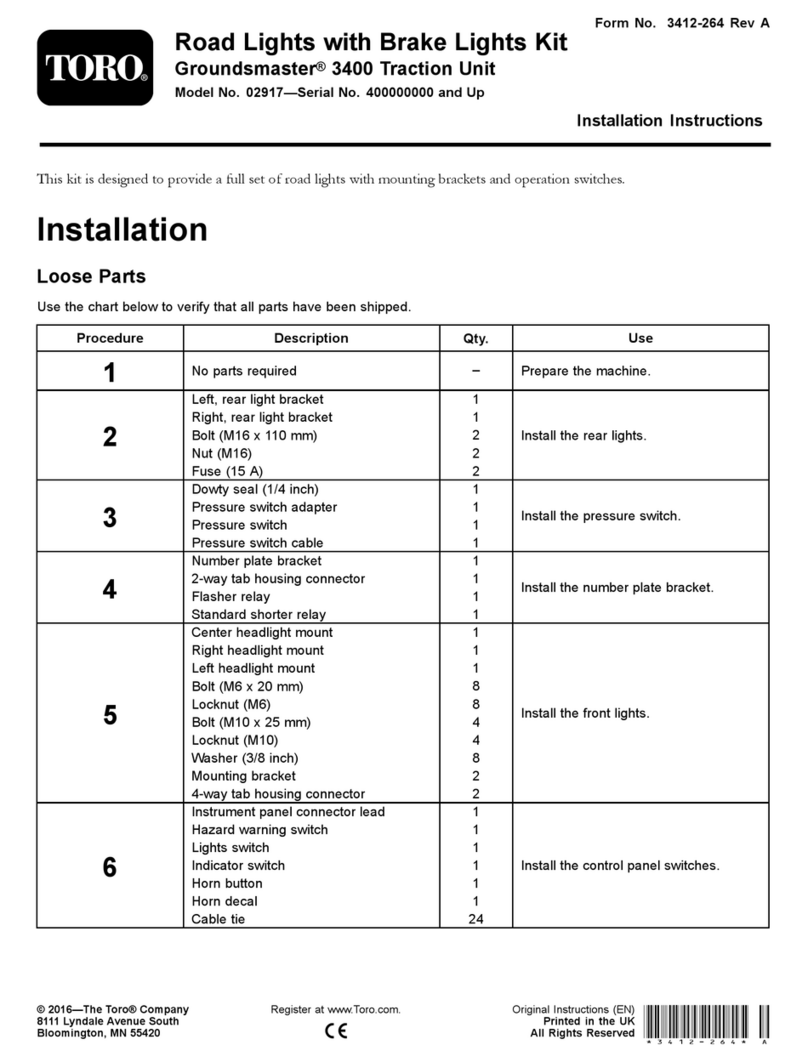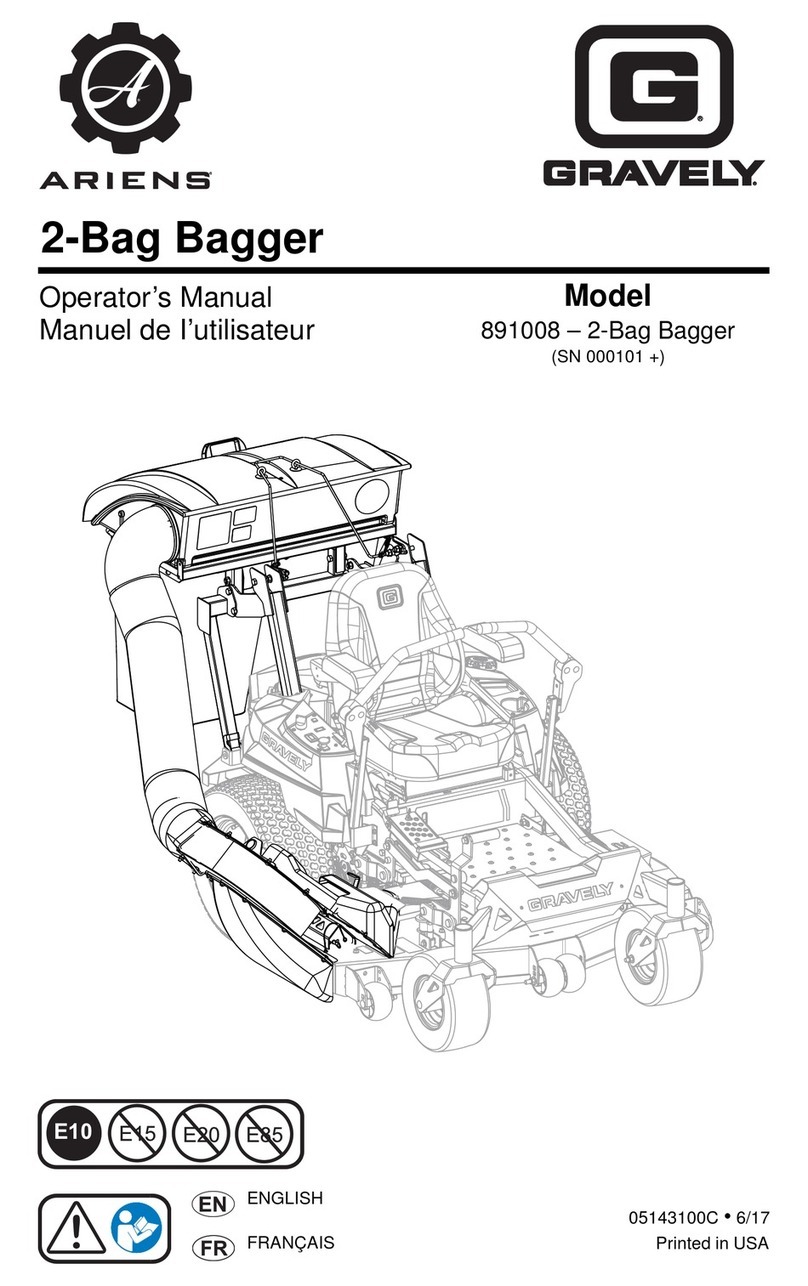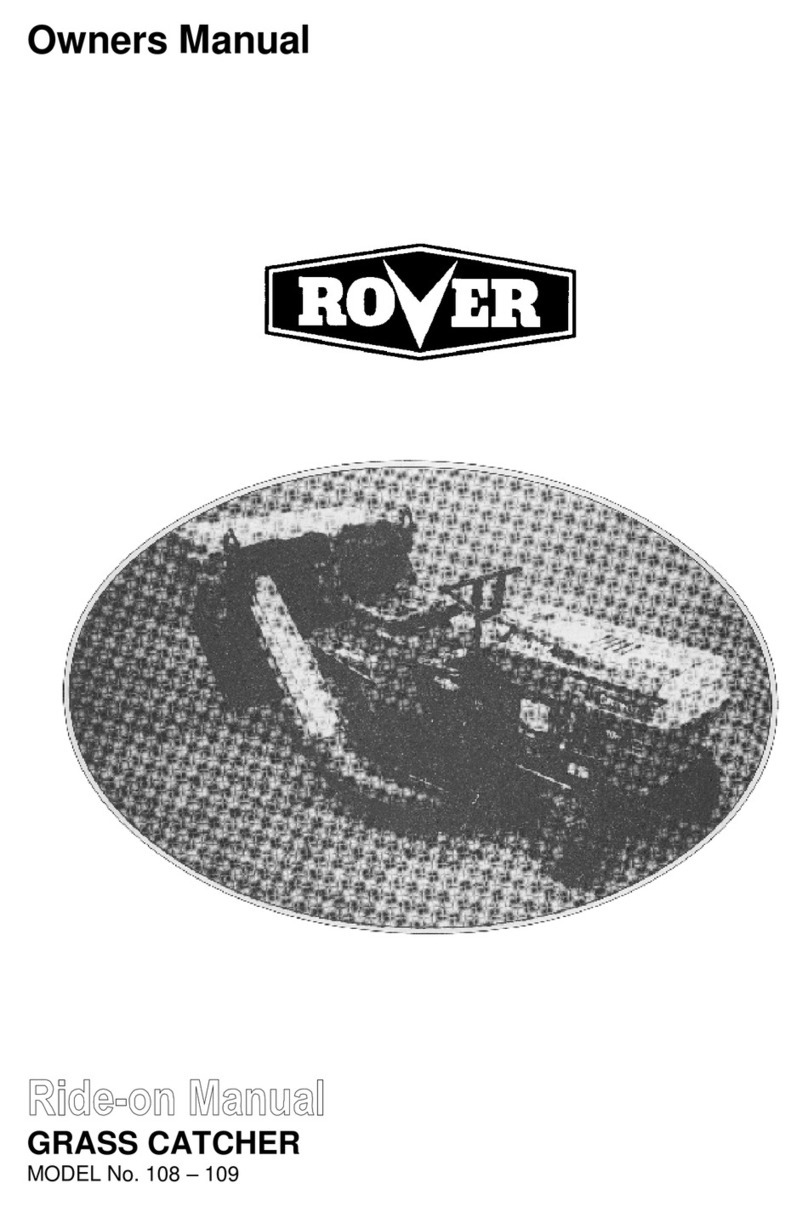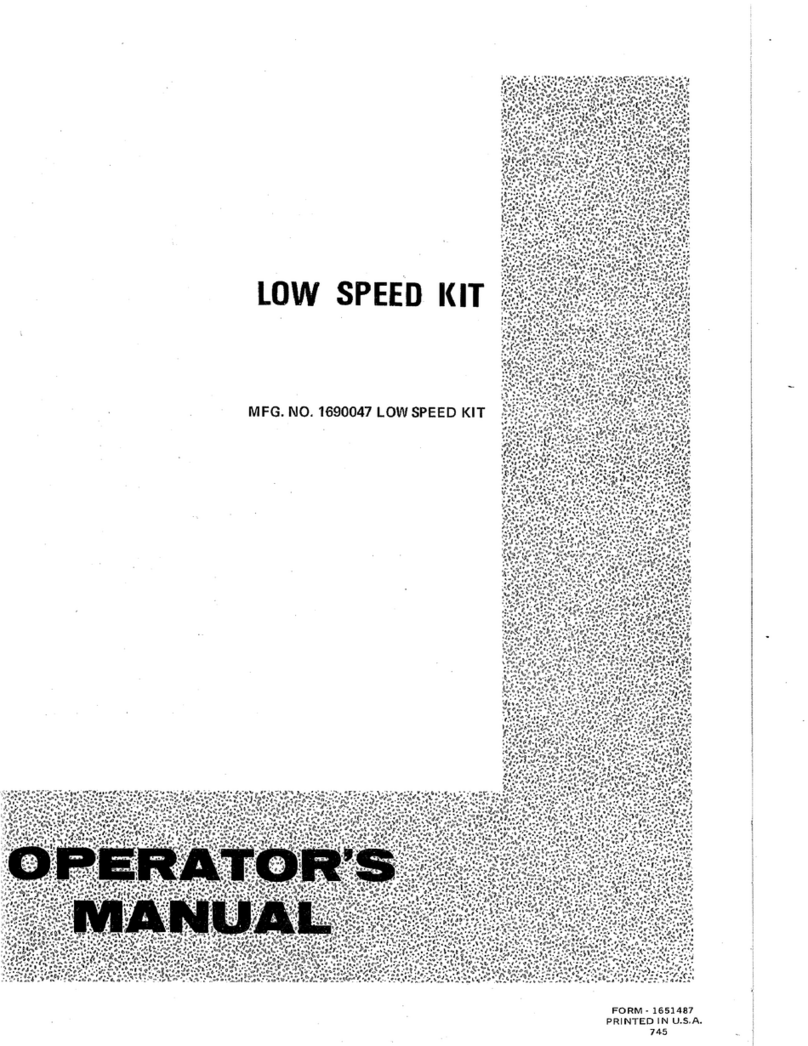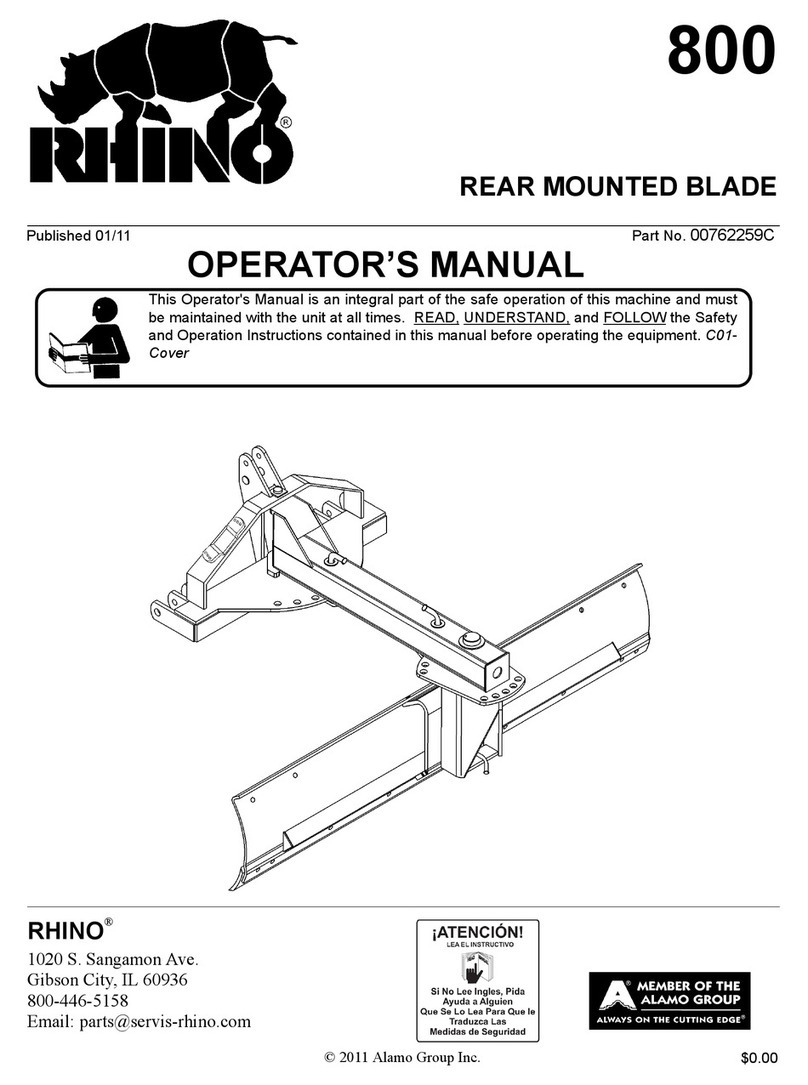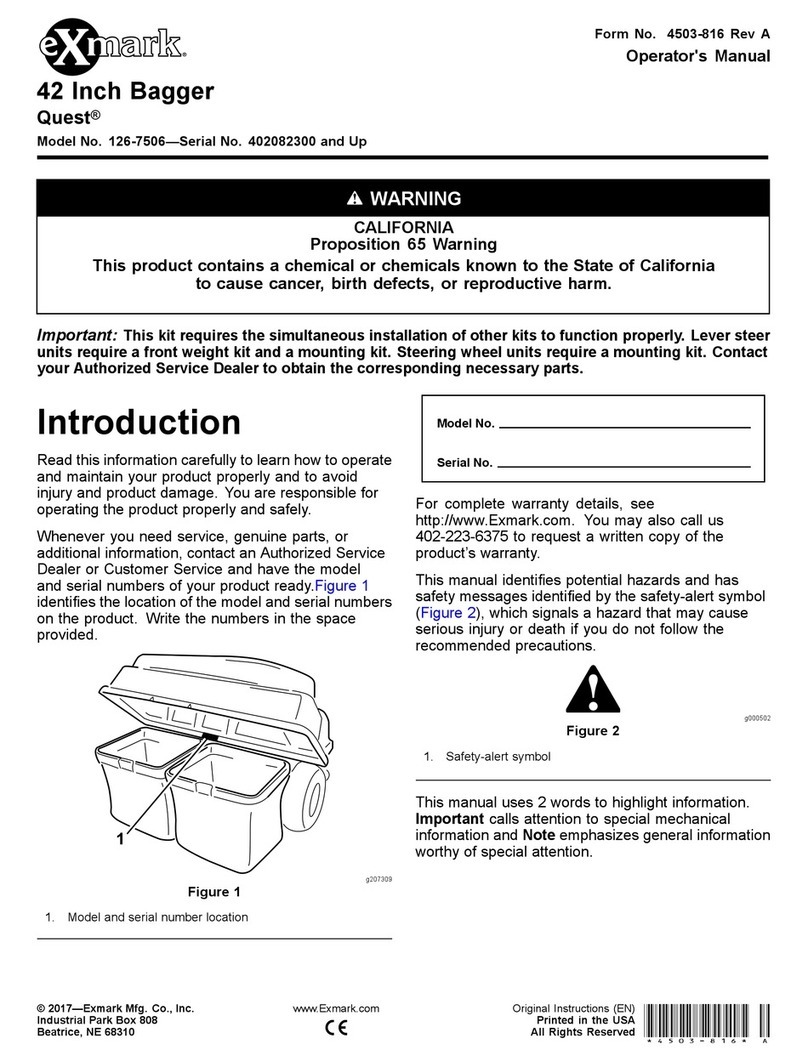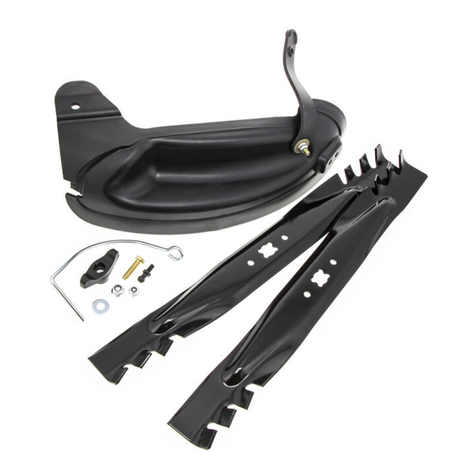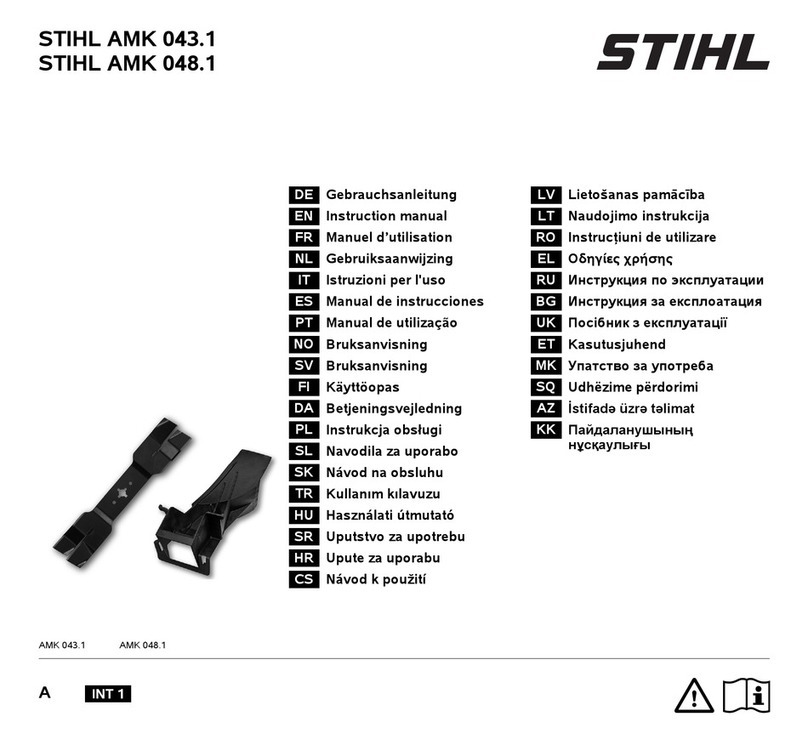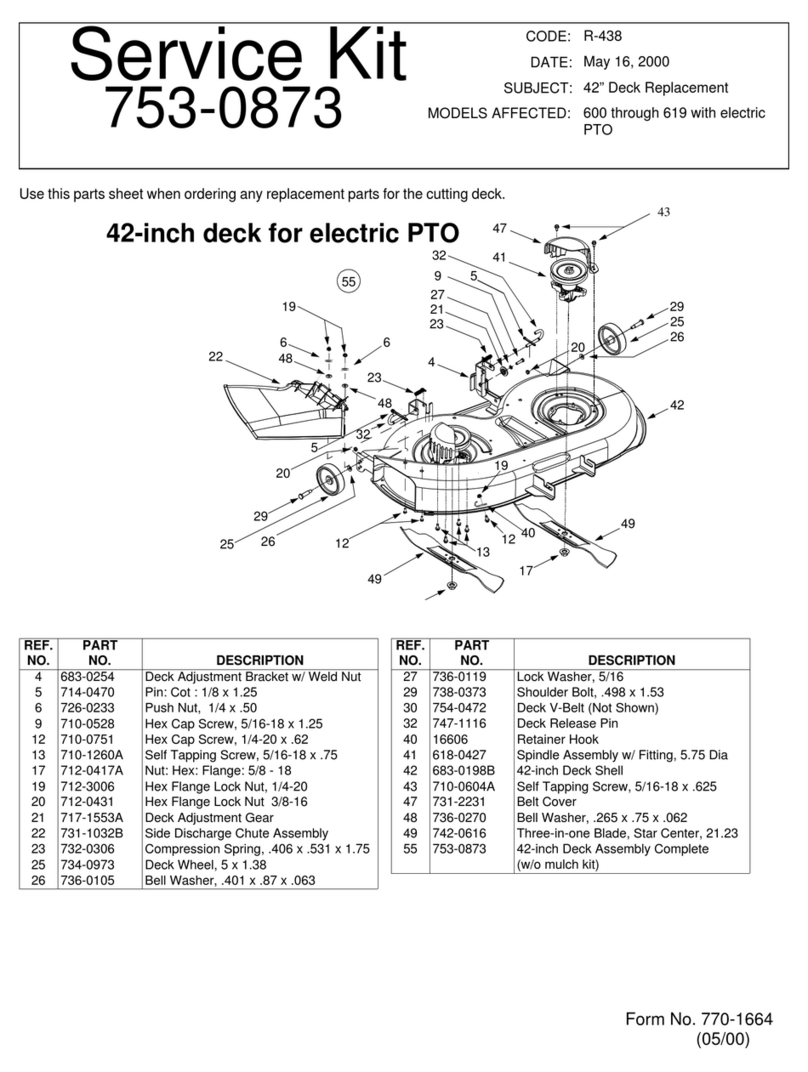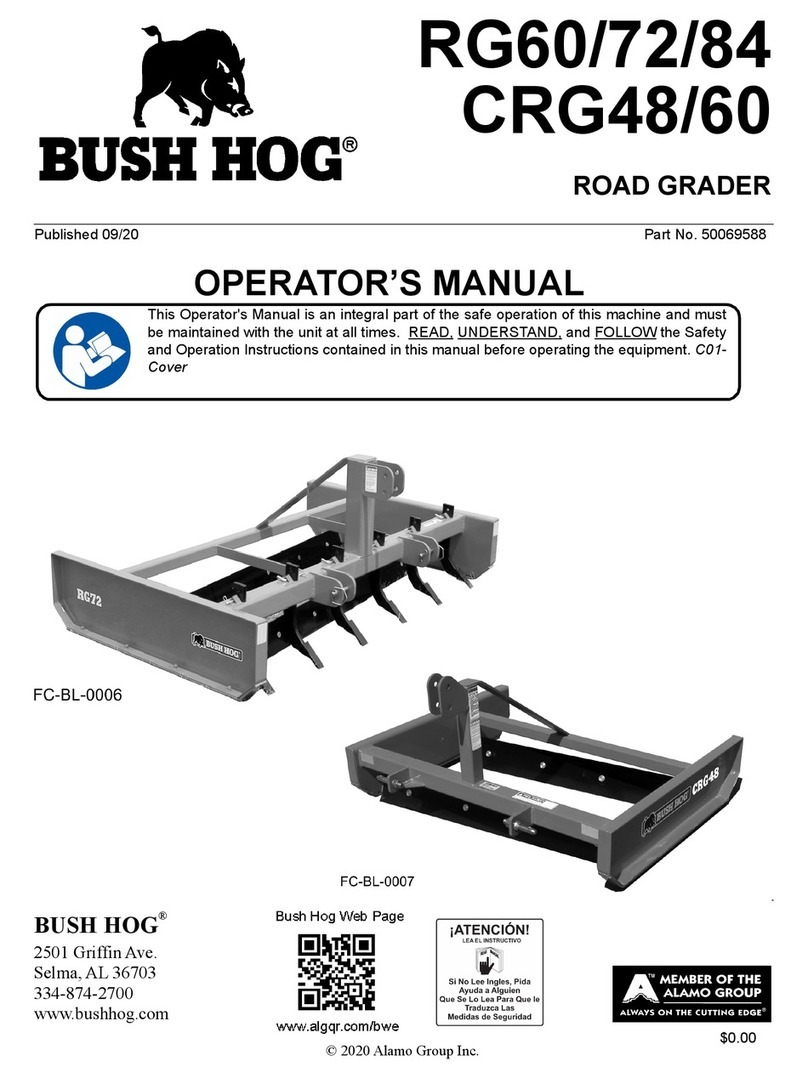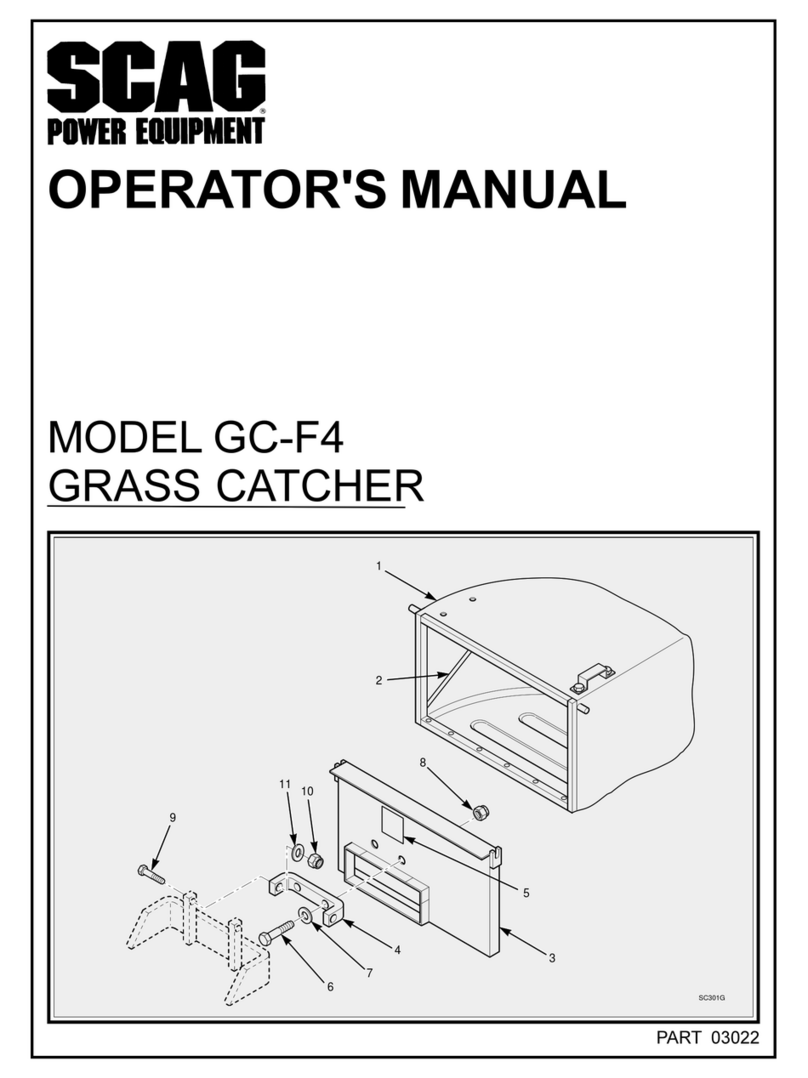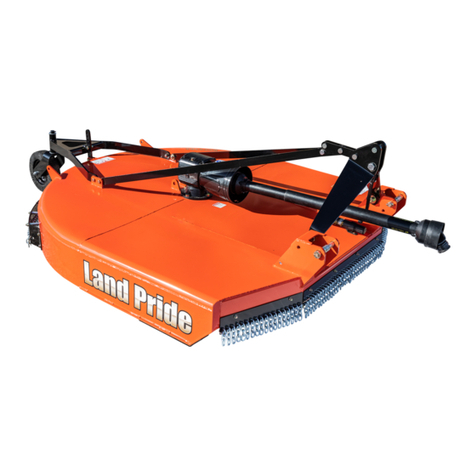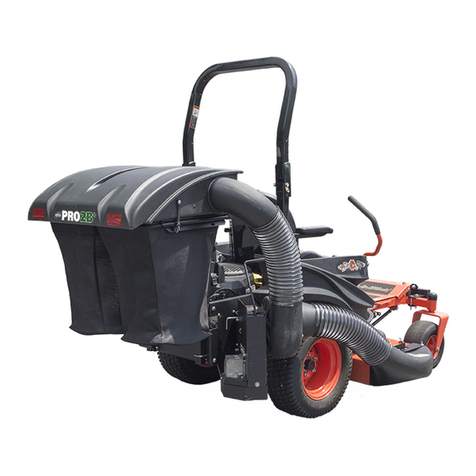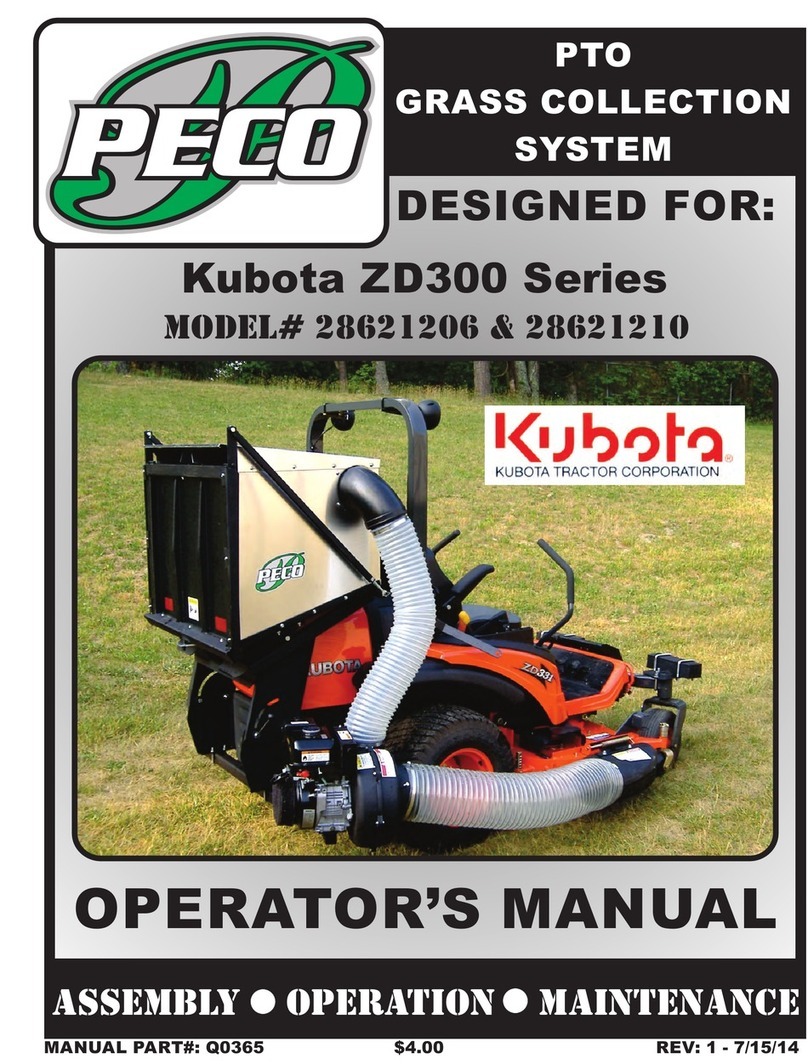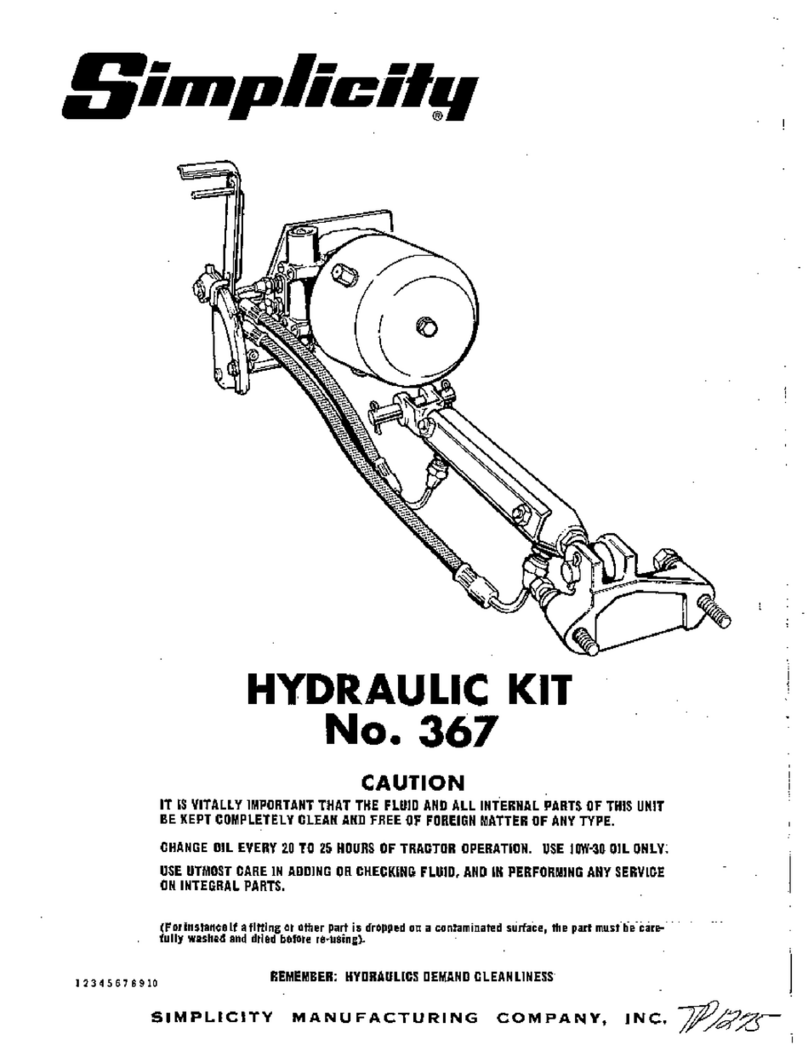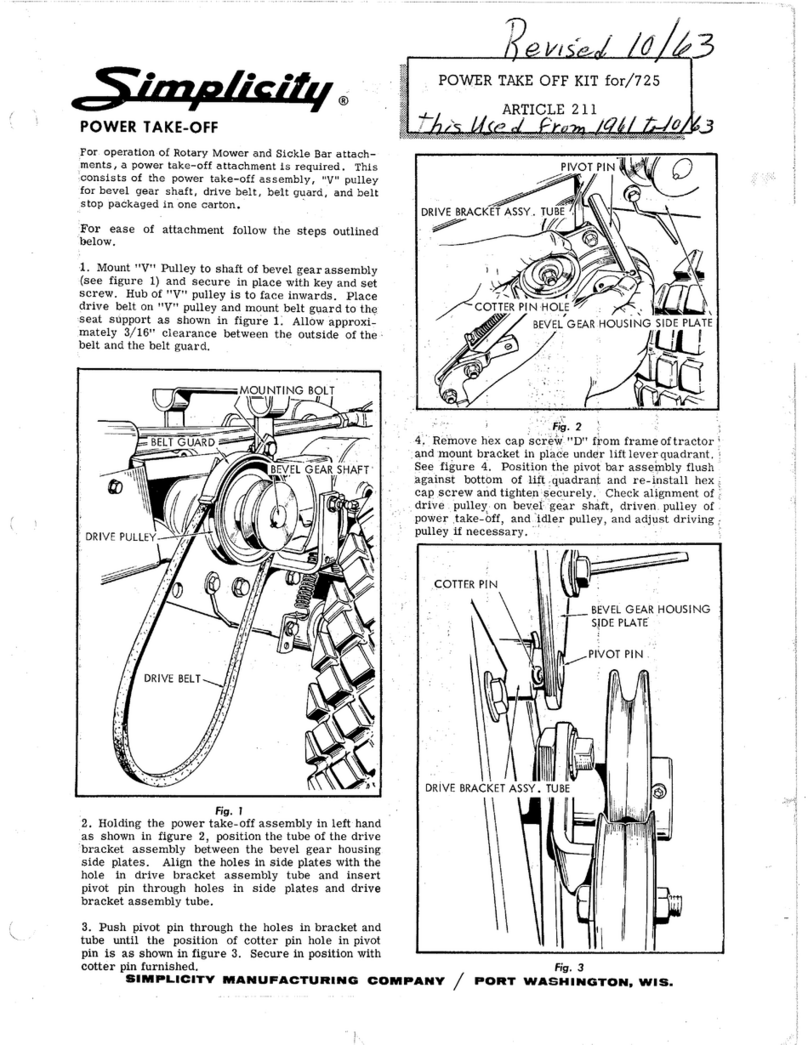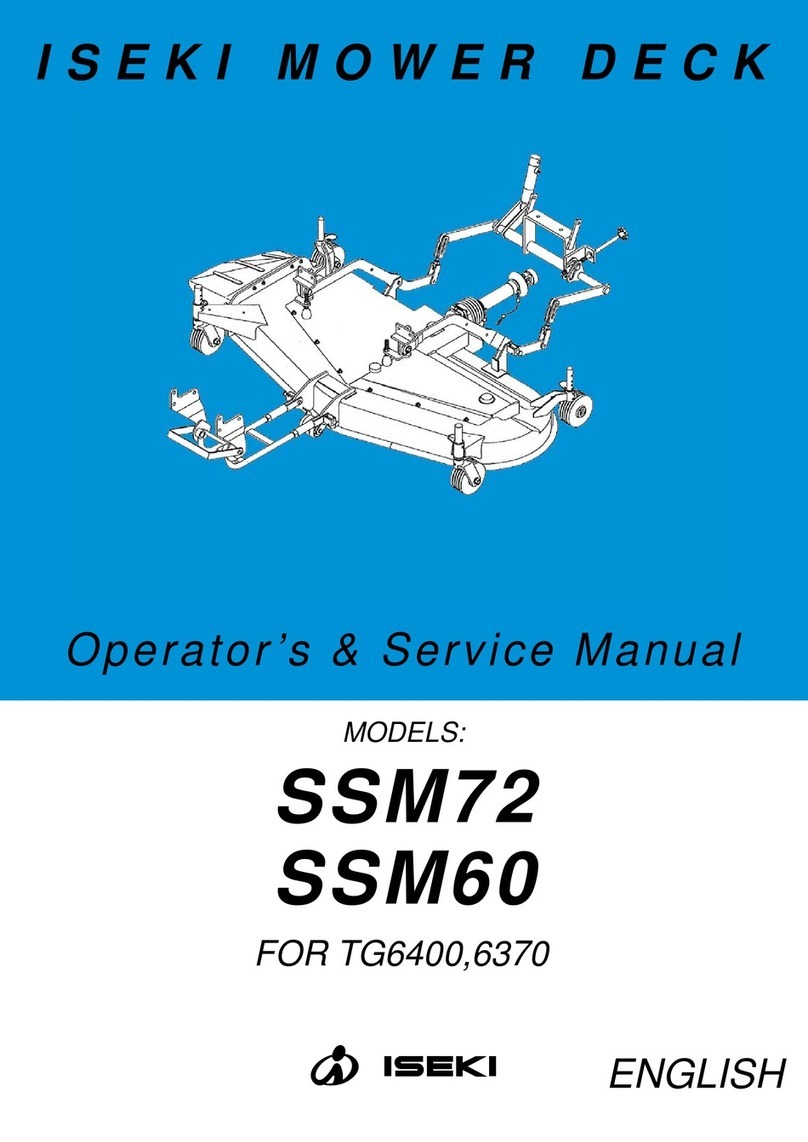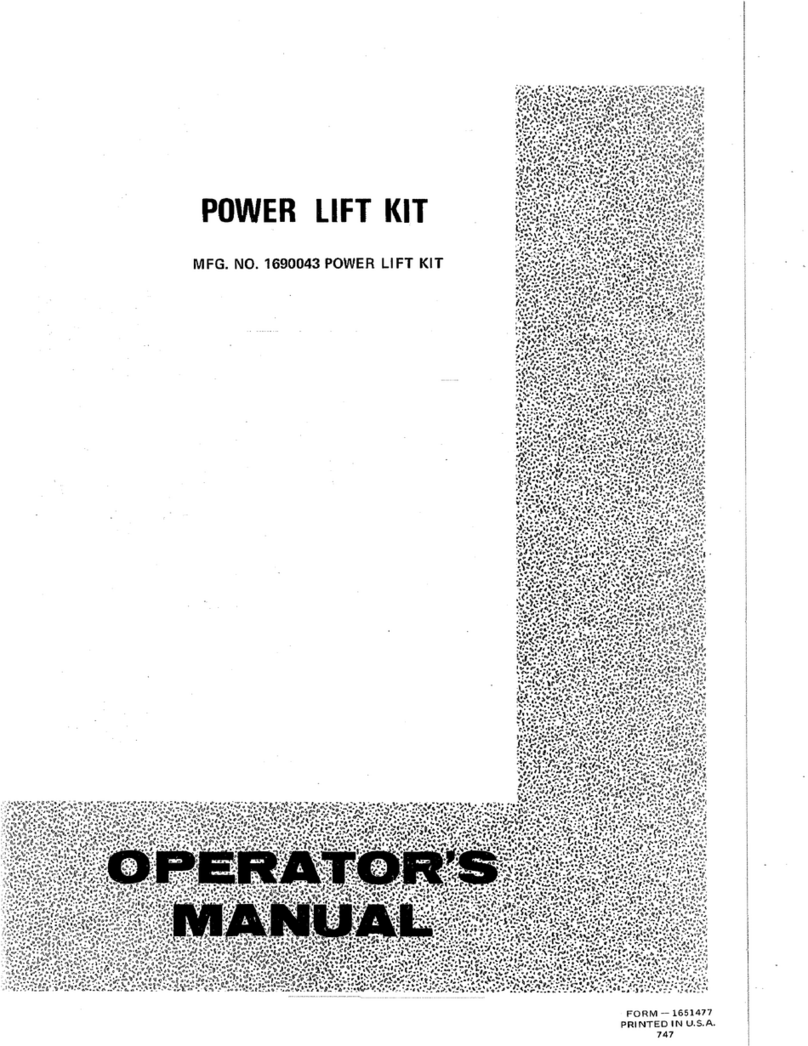
3
Safety
Safe Operating Practices
•Read, understand, and follow all instructions in the
traction unit operator’s manual before operating the
cutting unit.
•Read, understand, and follow all instructions in this
operator’s manual before operating the cutting unit.
•Never allow children to operate the cutting units. Do
not allow adults to operate traction unit or cutting units
without proper instruction. Only trained operators who
have read this manual should operate the cutting units.
•Never operate the cutting units when under the
influence of drugs or alcohol.
•Keep all shields and safety devices in place. If a
shield, safety device or decal is illegible or damaged,
repair or replace it before operation is commenced.
Also tighten any loose nuts, bolts, and screws to ensure
cutting unit is in safe operating condition.
•Always wear substantial shoes. Do not operate cutting
unit while wearing sandals, tennis shoes, sneakers or
shorts. Also, do not wear loose fitting clothing which
could get caught in moving parts. Always wear long
pants and substantial shoes. Wearing safety glasses,
safety shoes and a helmet is advisable and required by
some local ordinances and insurance regulations.
•Remove all debris or other objects that might be
picked up and thrown by the cutting unit reel blades.
Keep all bystanders away from the mowing area.
•If the cutting blades strike a solid object or the cutting
unit vibrates abnormally, stop and shut the engine off.
Check cutting unit for damaged parts. Repair any
damage before restarting and operating the cutting
unit.
•Lower the cutting units to the ground and remove key
from ignition switch whenever machine is left
unattended.
•Be sure cutting units are in safe operating condition by
keeping nuts, bolts and screws tight.
•Remove key from ignition switch to prevent accidental
starting of the engine when servicing, adjusting or
storing the machine.
•Perform only those maintenance instructions described
in this manual. If major repairs are ever needed or
assistance is desired, contact an Authorized Toro
Distributor.
•To ensure optimum performance and safety, always
purchase genuine Toro replacement parts and
accessories to keep the Toro all TORO. Never use
“will-fit” replacement parts and accessories made
by other manufacturers. Look for the Toro logo to
assure genuineness. Using unapproved replacement
parts and accessories could void the warranty of The
Toro Company.
Safety and Instruction Decals
Safety decals and instructions are easily visible to the operator and are located near any
area of potential danger. Replace any decal that is damaged or lost.
ON FRONT SHIELD OF CUTTING UNIT
(Part No. 93–6688 for CE)
ON FRONT SHIELD OF CUTTING UNIT
(Part No. 67–7960)
1. Read the operator’s manual before performing maintenance.
2. Cutting hazard to hands or feet—stop the engine and ensure
all moving parts have stopped before placing hands or feet in
the reel area.
